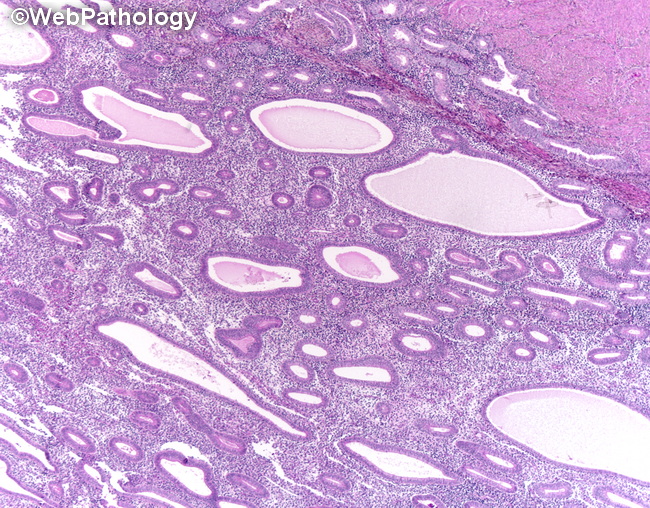Endometrial Hyperplasia : Clinical Presentation


Comments:
Clinical Presentation: The patient is usually perimenopausal (average age 50-55 years), although some may be in the reproductive age-group or postmenopausal. About 15-25% of women with atypical endometrial hyperplasia/endometrioid intraepithelial neoplasia are premenopausal. The most common presentation is abnormal non-cyclical uterine bleeding in the form of post-menopausal bleeding, hypermenorrhea, dysmenorrhea, or intermenstrual bleeding. Endometrial hyperplasia may be discovered incidentally on endometrial ultrasound during work-up for infertility, abdominal pain, or other complaints. Rarely, atypical glandular cells show up on a Pap smear, prompting an endometrial biopsy.



